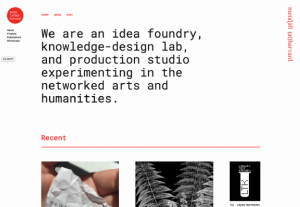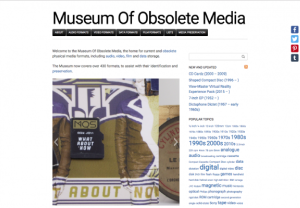Libraries Future
Back to Top
|
 |
|
Center for the Future of Libraries
|
Social studies |
|
Established in 2014, the American Library Association's Center for the Future of Libraries is dedicated to anticipating future trends and supporting forward-looking innovation in libraries. On this website, visitors can learn more about emerging library trends, keep abreast of the Center's activities via its blog, and download and read related reports. The Trends section of this website is especially interesting. Here, visitors will find information about 25 emerging movements and issues in libraries, ranging from Connected Learning to Robots to concerns about online Anonymity. Each trend includes an overview with links to related resources, and trends can also be browsed by classification (including Society, Technology, and Demographics). A specific highlight of the Library of the Future Blog, is Read for Later, "a weekly wrap-up of news and articles to help library professionals think about the future of our collections, spaces, services, partners, and roles in the community." Here, readers will find dozens of articles and resources that will be of interest to forward-looking librarians. For instance, in the March 27, 2017 Read for Later, visitors can download the New Media Consortium's Horizon Report on libraries, a sixty-page investigation of the opportunities and challenges of adopting new technologies in academic and research libraries. [MMB] |
|





|
|
 |
|
Future Library: 2014-2114
|
Language Arts |
|
"A forest in Norway is growing. In 100 years, it will become an anthology of books." Future Library is a unique, ongoing project headed by Scottish artist Katie Paterson that incorporates art, literature, and the natural world. As part of this project, a team planted 1,000 trees in a Nordmarka, a forest outside of Oslo, Norway. The plan? To tend to these trees until the year 2114, when they will be cut down and made into books. In the meantime, every year until 2114, a writer will donate a text to be published in one of these books in 2114. As Paterson explains, this project, which will be passed along to a new group of people every ten years until its culmination in 2114, centers on a philosophy that is central to both forestry and urban planning: that individuals and communities create things today that will ultimately benefit future generations. On this website, visitors can learn more about the Future Library project, view related photographs and a short video about the project, and follow news and press coverage related to the project. [MMB] |
|





|
|
 |
|
 |
|
 |
|
mL(at)H
|
Arts |
|
metaLAB, or mL(at)H, is "an idea foundry, knowledge-design lab, and production studio" that is dedicated to pioneering new ways for libraries to serve communities. Based out of Harvard University's Berkman Klein Center, the metaLAB explores "the digital arts and humanities through research, experimentation, tool building, teaching, through publications in print and online, and via exhibition, performance, and social practice." Within this broad mission, the future of libraries is a special focus. metaLAB is headed by Matthew Battles, who authored the 2003 book Library: An Unquiet History. One of metaLAB's ongoing projects, Library Test Kitchen, is a series of workshops that encourage participants to rethink how libraries could function. Recent ideas that have come out of these workshops include a "Neo-Carell Sleeping Chair" (a portable carell that simultaneously serves as a chair, laptop stand, and napping spot) and a WiFi "Cold Spot" to help users disconnect. Meanwhile, other metaLAB projects and publications center on the changing nature of preserving and presenting data and objects. For example, Yanni Alexander Loukissas's Life and Death of Data, offers an interactive history of Harvard's Arnold Arboretum Archives. Visitors may scroll through a timeline to see when the Arboretum acquired certain archival materials. [MMB] |
|





|
|





















